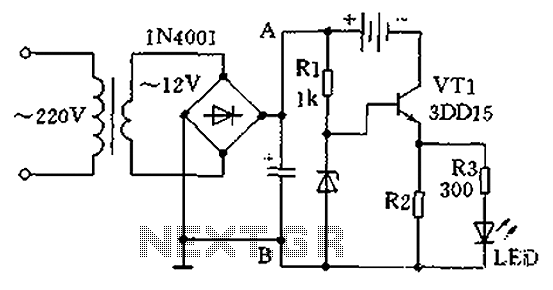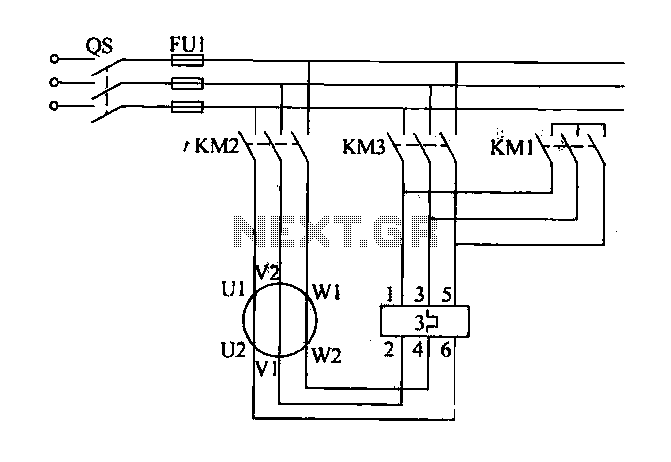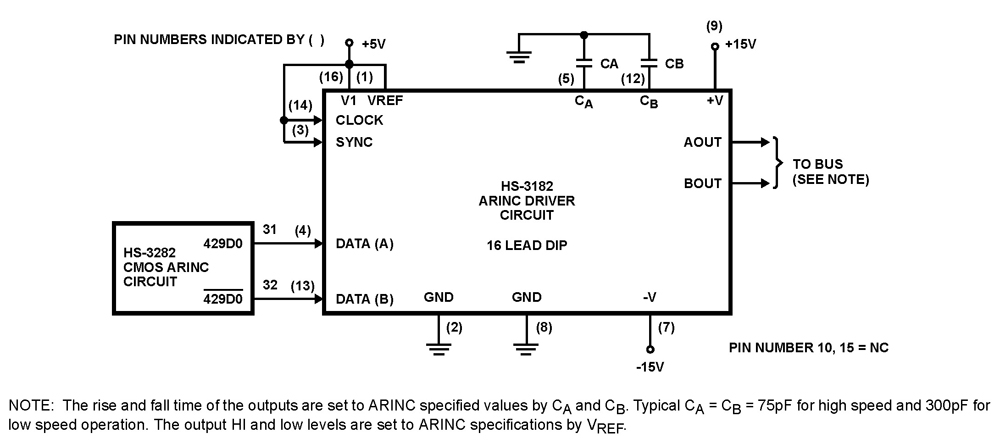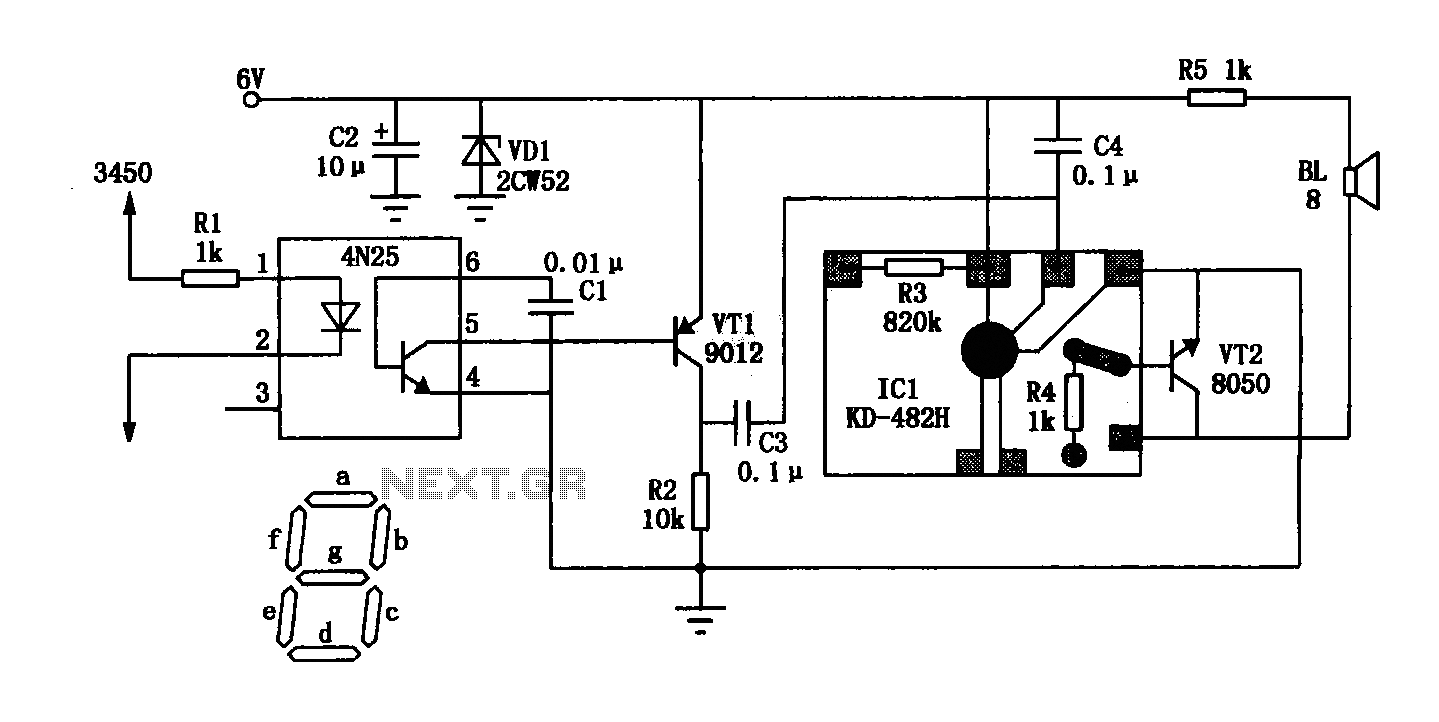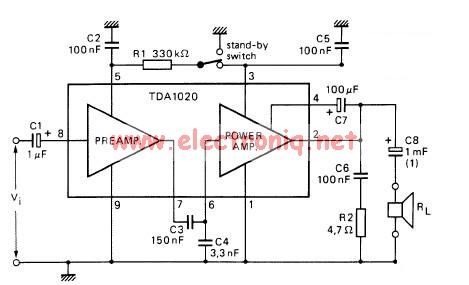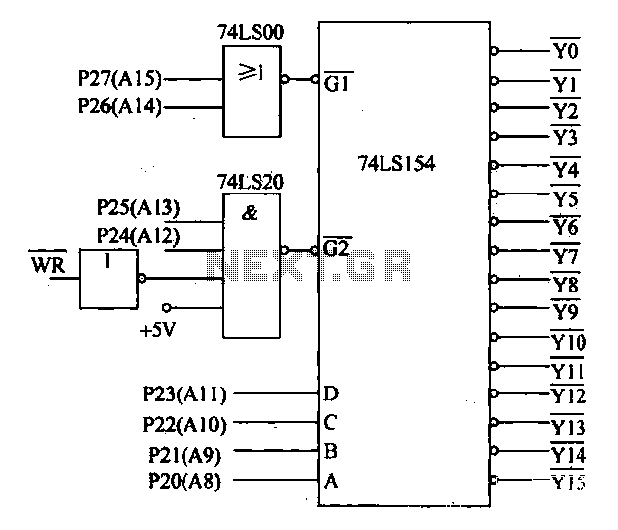
Audio Mixer Circuit
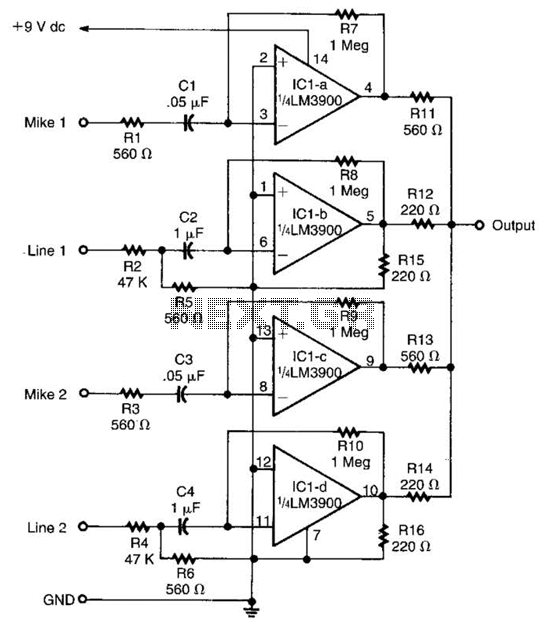
Designed around an LM3900 quad op amp, this mixer combines two line inputs and two microphone inputs, summing them at the output terminal. Resistors R7 through R10 can be adjusted to vary the gain, approximately +23 dB.
The mixer circuit utilizes the LM3900 quad operational amplifier, which is well-suited for audio applications due to its low noise characteristics and high input impedance. The circuit architecture integrates two line-level inputs and two microphone-level inputs, enabling the simultaneous processing of different audio sources.
At the input stage, each line and microphone input is connected to the non-inverting terminals of the op-amps within the LM3900. The gain of the op-amp can be adjusted using resistors R7 through R10, which form a feedback network around each op-amp. By changing the values of these resistors, the overall gain of the mixer can be modified, allowing for a maximum gain of approximately +23 dB.
The output of the op-amps is then summed together, providing a mixed audio signal at the output terminal. This output can be further processed or amplified as required. The design ensures that the mixer maintains a balanced audio signal, minimizing distortion and preserving the integrity of the original sound sources.
Overall, this mixer circuit is versatile and can be utilized in various audio applications, including live sound reinforcement, recording studios, and broadcasting, where multiple audio inputs need to be combined effectively. Designed around an LM3900 quad op amp, this mixer combines 2-line and 2-mike inputs and sums them at the output terminal. R7 through RIO can be changed to vary the gain (around +23 dB).
The mixer circuit utilizes the LM3900 quad operational amplifier, which is well-suited for audio applications due to its low noise characteristics and high input impedance. The circuit architecture integrates two line-level inputs and two microphone-level inputs, enabling the simultaneous processing of different audio sources.
At the input stage, each line and microphone input is connected to the non-inverting terminals of the op-amps within the LM3900. The gain of the op-amp can be adjusted using resistors R7 through R10, which form a feedback network around each op-amp. By changing the values of these resistors, the overall gain of the mixer can be modified, allowing for a maximum gain of approximately +23 dB.
The output of the op-amps is then summed together, providing a mixed audio signal at the output terminal. This output can be further processed or amplified as required. The design ensures that the mixer maintains a balanced audio signal, minimizing distortion and preserving the integrity of the original sound sources.
Overall, this mixer circuit is versatile and can be utilized in various audio applications, including live sound reinforcement, recording studios, and broadcasting, where multiple audio inputs need to be combined effectively. Designed around an LM3900 quad op amp, this mixer combines 2-line and 2-mike inputs and sums them at the output terminal. R7 through RIO can be changed to vary the gain (around +23 dB).
